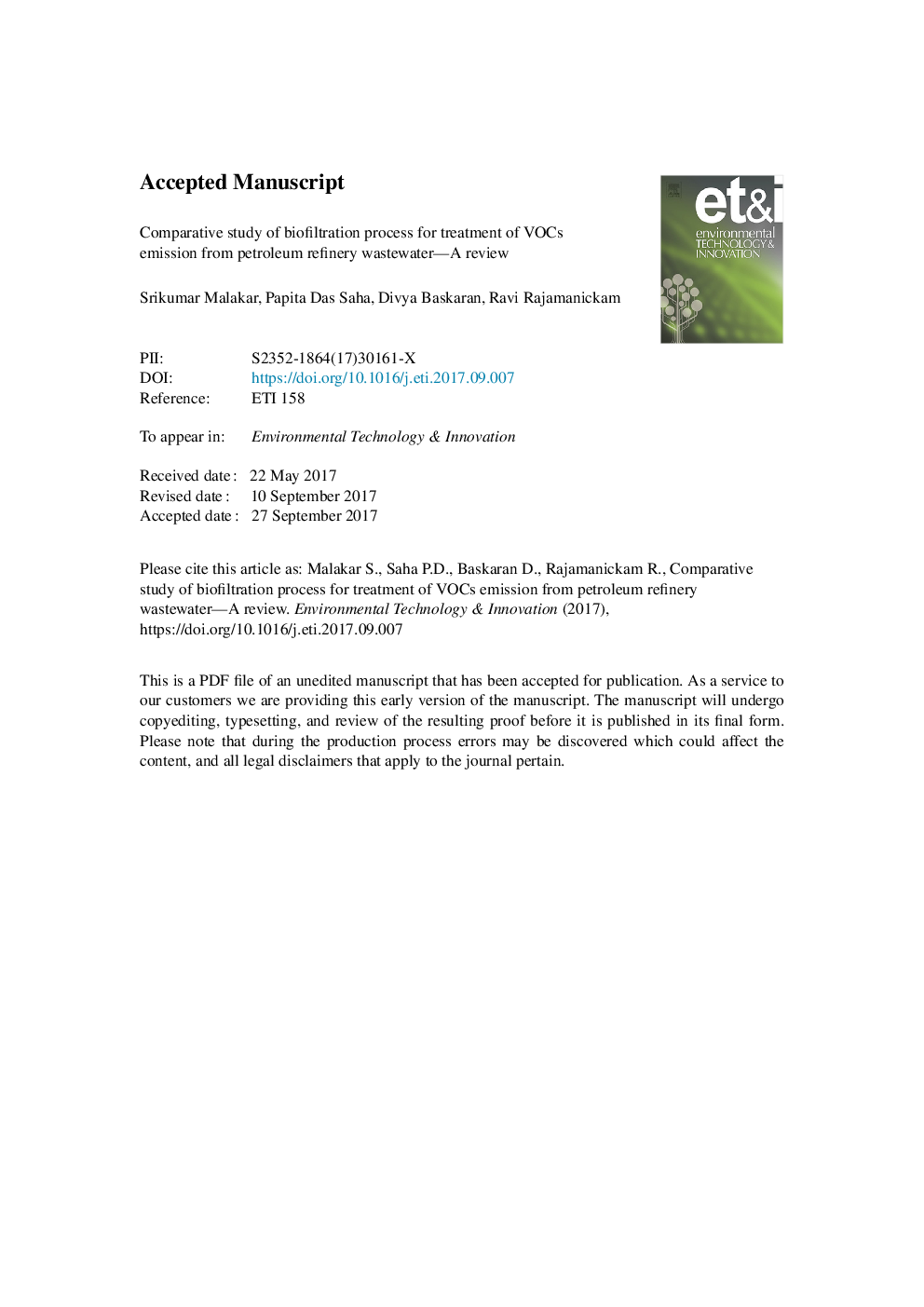| Article ID | Journal | Published Year | Pages | File Type |
|---|---|---|---|---|
| 8858093 | Environmental Technology & Innovation | 2017 | 54 Pages |
Abstract
Volatile organic compounds (VOCs) and many in-organic hazardous air pollutants are generated from wastewater of petroleum refinery. Due to the regulatory norms and urgency of treating these hazardous compounds, implementation of suitable technology is necessary. Among many conventional methods, biofiltration is acquiring high importance due to its environment friendly process and cost effectiveness. Operating data, lab experiments and literature review suggests that biofiltration can easily achieve removal efficiency of >90% VOCs and odor in a controlled environment. Hence this process is widely gaining popularity across Europe, Japan, US and other countries. However, due to the complexity in biodegradation and bioactivity, a complete understanding about the process, mechanism of biofilter is needed. In laboratory VOC removal experiment may be effective, but in actual operating condition with multi-component VOCs and in-organics require proper design and optimum operating atmosphere. Also, there are many full scale biofilters installed worldwide, there are less comprehensive review on VOC removal by biofiltration generated in petroleum wastewater treatment plants. In this paper, bio-treatability of VOCs found in refinery wastewater, different bio-reactors, reaction kinetics, designing and operating parameters are discussed. It also outlines the advantages, disadvantages and problems associated with biofiltration.
Related Topics
Life Sciences
Environmental Science
Environmental Chemistry
Authors
Srikumar Malakar, Papita Das Saha, Divya Baskaran, Ravi Rajamanickam,
